Search results for: 'Egyptian stone'
-
 Egyptian stone beaker
Egyptian stone beakerThe elegant stone vase was probably used as an ointment vessel. 5th to 6th dynasty of ancient Egypt, Old Kingdom.
Price: on request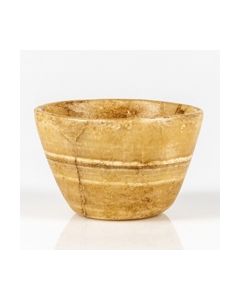 Egyptian stone bowl
Egyptian stone bowlThis wonderful bowl of banded stone was probably used for ritual purposes. From the Early Dynastic Period or Old Kingdom of ancient Egypt.
Price: on request Egyptian stone bowl
Egyptian stone bowlThis wonderful and relatively large bowl of banded stone was probably used for ritual purposes. From the Early Dynastic Period or Old Kingdom of ancient Egypt.
Price: on request Egyptian green stone vessel
Egyptian green stone vesselThe stone vessel is made of beautiful green serpentine. From the collection of Egyptologist Professor Wiedemann. Middle Kingdom of Ancient Egypt.
Price: on request Slender Egyptian stone beaker
Slender Egyptian stone beakerThe small and tall stone vessel is made of alabaster. From the collection of Egyptologist Professor Wiedemann.
Price: on request Egyptian stone vessel from Luxor
Egyptian stone vessel from LuxorThe cosmetic vessel is of a rare type. From the collection of Egyptologist Professor Wiedemann. Middle Kingdom of Ancient Egypt
Price: on request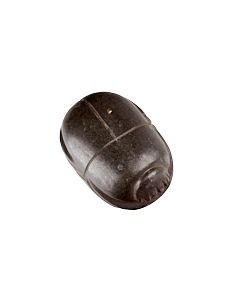 Beautiful Egyptian scarab made of dark stone
Beautiful Egyptian scarab made of dark stoneThe funerary scarab amazes by its size and the almost black stone that could be diorite. The piece is from the Late Period of Ancient Egypt.
Price: on request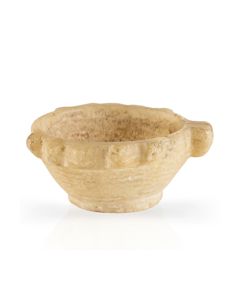 Egyptian alabaster bowl from Luxor
Egyptian alabaster bowl from LuxorThe small stone vessel is an offering bowl for libation. From the collection of Egyptologist Professor Wiedemann. 12th to 18th dynasty of Ancient Egypt
Price: on request Egyptian chalice
Egyptian chaliceThe thin-walled stone cup is reminiscent of a lotus bud. From the collection of Egyptologist Professor Wiedemann. 18th dynasty of Ancient Egypt.
Price: on request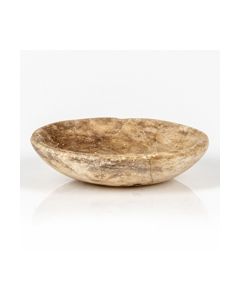 Shallow bowl from Egypt
Shallow bowl from EgyptMade of nicely banded Egyptian alabaster. High quality bowl with a fine polish. Early Dynastic to Old Kingdom.
Price: on request Small Egyptian Kohl vessel
Small Egyptian Kohl vesselThe stone pot was used for Kohl, the eye cosmetic of the ancient Egyptians. Vessel with well preserved body and missing rim. From the 2nd Millenium BC.
Price: on request Small Egyptian Kohl vessel
Small Egyptian Kohl vesselThe stone pot was used for Kohl, the eye cosmetic of the ancient Egyptians. Vessel with well preserved body and missing rim. From the 2nd Millenium BC.
Price: on request Egyptian Kohl vessel
Egyptian Kohl vesselThe small stone pot of nicely polished granite was used for Kohl, the eye cosmetic of the ancient Egyptians. From the time between Middle Kingdom and New Kingdom.
Price: on request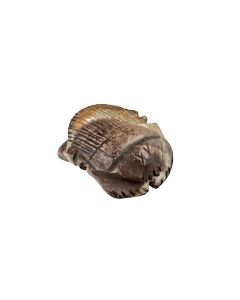 Scarab made of banded stone
Scarab made of banded stoneThis fantastic funerary scarab captivates with the beautiful banded stone it was made of. A piece from the Greco-Roman period.
Price: on request Nile tilapia made of dark stone
Nile tilapia made of dark stoneThis Egyptian fish symbolizes fertility and rebirth. A nice cultic item from the New Kingdom of Ancient Egypt.
Price: on request Egyptian predynastic cosmetic palette
Egyptian predynastic cosmetic paletteHigh quality palette with two stylized bird heads. Characteristic for the Naqada II period. Circa 3500 to 3200 BC.
Price: on request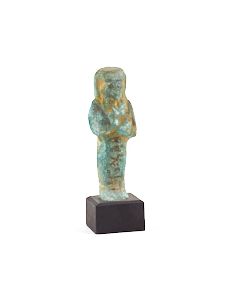 Egyptian ushabti
Egyptian ushabtiFunerary statuette made of turquoise faience with black paint. 21st dynasty of ancient Egypt.
Price: on request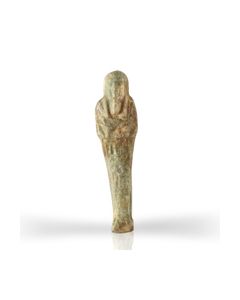 Egyptian ushabti
Egyptian ushabtiWell-preserved funerary statuette made of mint green faience. From the Late Period of Ancient Egypt.
Price: on request Egyptian ushabti
Egyptian ushabtiWell-preserved funerary statuette made of mint green faience. From the Late Period of Ancient Egypt.
Price: on request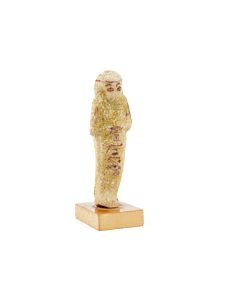 Egyptian ushabti for Nisi-ta-udjat-achet
Egyptian ushabti for Nisi-ta-udjat-achetInteresting figurine made of green faience with black paint. A typical funerary statuette from the Third Intermediate Period of ancient Egypt.
Price: on request Small Egyptian ushabti
Small Egyptian ushabtiFunerary statuette from the Third Intermediate Period of ancient Egypt. Orange-brown clay with green faience.
Price: on request Egyptian ushabti from museum collection
Egyptian ushabti from museum collectionLarge wooden funerary figurine with the original dark paint still mostly intact. From the New Kingdom of ancient Egypt.
Price: on request Egyptian ushabti
Egyptian ushabtiInteresting funerary statuette made of mint green faience with black painting. From the Ptolemaic era of Ancient Egypt, incorporating features of earlier periods.
Price: on request Ushabti with interesting inscription
Ushabti with interesting inscriptionNicely painted Egyptian funerary statuette from the Ramesside Period.
Price: on request Egyptian Ushabti from the Late Period
Egyptian Ushabti from the Late PeriodLarge funerary statuette made of faience. From the 26th to 30th dynasty of Ancient Egypt.
Price: on request Egyptian scarab
Egyptian scarabSmall funerary scarab made of stone. Late Period of Ancient Egypt. The piece is from the famous Matouk collection.
Price: on request Egyptian ushabti of Hor-wdja from Thebes
Egyptian ushabti of Hor-wdja from Thebes30th dynasty mummiform funerary figurine made of light green faience. With receipt from 1974 by Hassani Abd-El-Galeel of Luxor.
Price: on request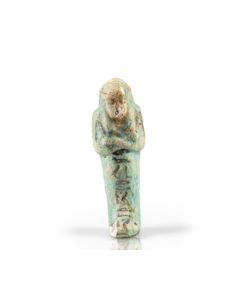 Ushabti for Bu-iri-eri-Renenutet
Ushabti for Bu-iri-eri-RenenutetEgyptian funerary figurine from the Third Intermediate Period. The owner's name is rarely attested and could hint to an origin in the Faiyum Oasis.
Price: on request Clay ushabti
Clay ushabtiTall Egyptian funerary statuette from the New Kingdom. From the collection of the archaeologist and artist Erich Charlier.
Price: on request Egyptian ushabti for Horus-in-Chemmis
Egyptian ushabti for Horus-in-ChemmisFunerary statuette made of turquoise faience with black paint and cute name inscription.
Price: on request Egyptian overseer figurine
Egyptian overseer figurineFrom a 22nd dynasty tomb containing a large number of ushabtis. Their work performance in the afterlife was to be ensured by the overseer figurine.
Price: on request Small shabti
Small shabtiNice turquoise faience figurine with black paint. From the 22nd to 25th dynasty of ancient Egypt.
Price: on request Wooden ushabti
Wooden ushabtiEgyptian funerary figurine made of wood with details added in black. Figure from the 19th dynasty of ancient Egypt, hieroglyphs added in modern times.
Price: on request Egyptian model vessels of a founding ceremony
Egyptian model vessels of a founding ceremonyA group of seven miniature bowls and three miniature vases made of clay. Once filled with offerings and used ritually during a foundation stone laying ceremony. Dating to the Old Kingdom, around 2500 BC.
Price: on request Saite Dynasty scarab
Saite Dynasty scarabEgyptian funerary scarab made of dark stone. From the 26th dynasty of Ancient Egypt.
Price: on request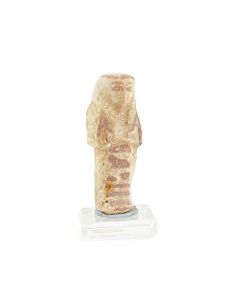 Ushabti for Henut-tawy
Ushabti for Henut-tawyThis Egyptian funerary statuette was found in the 19th century in the northern part of Abydos. It dates to the 22nd dynasty.
Price: on request

